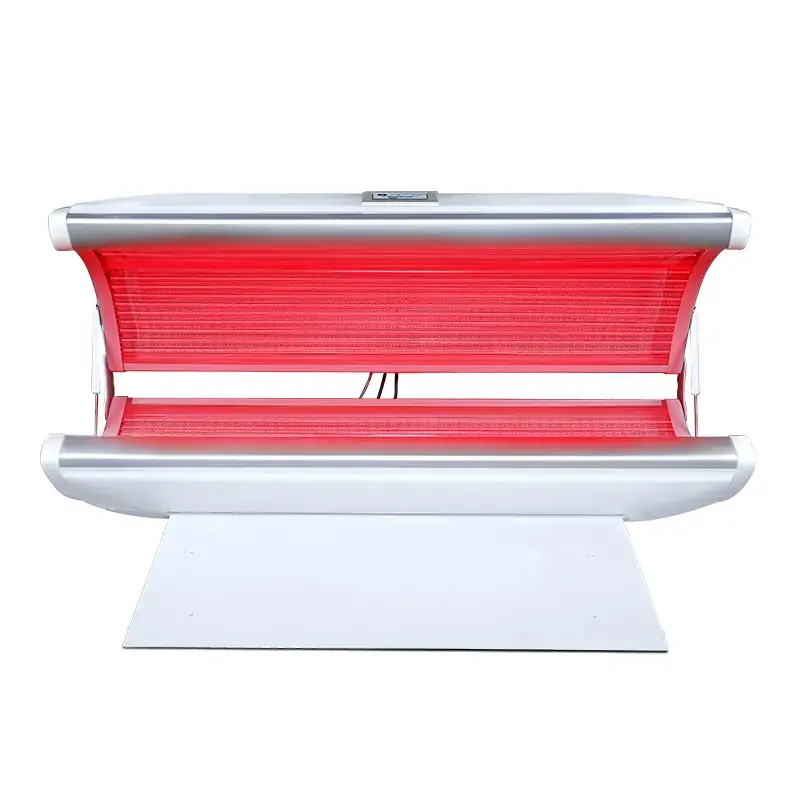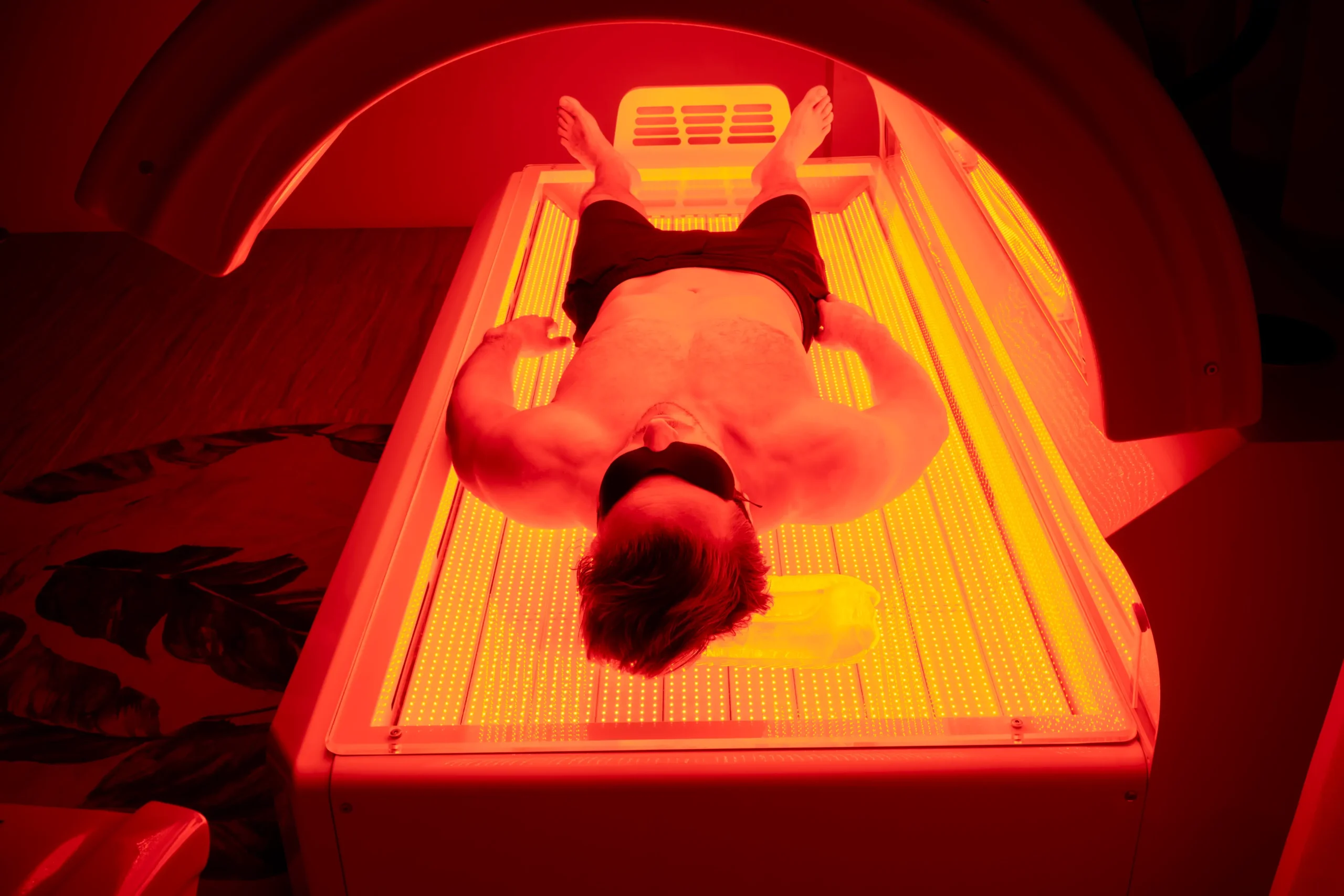
Rødt lys terapiseng

Tel: +8619865478065 E-post: info@redluxelight.com


Rødt lys terapiseng

Red light therapy, also known as low-level light therapy (LLLT), uses specific wavelengths of red light to penetrate the skin and promote cell repair and regeneration. It is used for various medical and cosmetic purposes, including skin rejuvenation, pain relief, and wound healing.
Red light therapy works by stimulating the mitochondria within cells, enhancing their energy production. This process, known as photobiomodulation, helps to reduce inflammation, promote healing, and improve blood circulation.
Yes, red light therapy is generally considered safe when used correctly. It is non-invasive and has minimal side effects. However, it’s important to follow the manufacturer’s guidelines and consult with a healthcare provider if you have any medical conditions.
Red light therapy offers numerous benefits, including improved skin texture, reduced wrinkles, accelerated wound healing, pain relief, and reduced inflammation. It can also promote hair growth and enhance muscle recovery.
The time it takes to see results can vary depending on the condition being treated and the frequency of therapy sessions. Some people may notice improvements within a few weeks, while others may take a few months of regular use.
Yes, there are many home-use red light therapy devices available on the market. These devices are typically designed to be safe and easy to use. However, it’s important to choose a reputable product and follow the instructions carefully.
Red light therapy is generally well-tolerated with minimal side effects. Some people may experience mild redness or irritation, but these effects are usually temporary. Always start with shorter sessions to gauge your skin’s response.
Red light therapy can be used to treat a variety of conditions, including acne, psoriasis, eczema, wrinkles, joint pain, muscle soreness, and chronic wounds. It is also used for general skin rejuvenation and to promote hair growth.
The recommended frequency of red light therapy sessions can vary depending on the condition being treated and the device being used. Typically, sessions range from a few times per week to daily treatments. Consult with the device manufacturer or a healthcare provider for specific guidelines.
Red light therapy uses visible red light wavelengths, typically between 630 nm and 700 nm, which penetrate the skin to a shallow depth. Infrared light therapy uses wavelengths that are invisible to the naked eye, typically between 700 nm and 1200 nm, which can penetrate deeper into tissues. Both types of light have therapeutic benefits but are used for different purposes.
The 660 nm wavelength of red light is effective for skin treatments as it penetrates the skin to a depth of about 2-3 millimeters. This wavelength is absorbed by the mitochondria in skin cells, promoting collagen production, reducing wrinkles, and enhancing overall skin texture and tone. It is also used to accelerate wound healing and reduce inflammation.
The 850 nm wavelength, which falls into the near-infrared spectrum, penetrates deeper into the body, reaching tissues up to 25 millimeters deep. This makes it particularly effective for treating deeper issues such as joint pain, muscle recovery, and reducing inflammation in deeper tissues. It helps improve blood circulation and supports the healing of deep wounds and injuries.
Yes, red light therapy can help reduce acne by reducing inflammation and bacteria on the skin. The therapy promotes healing and can reduce the occurrence of acne outbreaks.
Red light therapy stimulates hair follicles and improves blood circulation to the scalp, which can help to promote hair growth and reduce hair loss.
Yes, red light therapy can help alleviate pain by reducing inflammation and promoting healing in muscles and joints. It is commonly used for conditions like arthritis, tendonitis, and muscle soreness.
No, there is typically no downtime after red light therapy. You can resume your normal activities immediately following the treatment.
Each session typically lasts between 10 to 20 minutes, depending on the condition being treated and the device used. Always follow the manufacturer’s recommendations for optimal results.
Yes, red light therapy can often be used in conjunction with other treatments such as topical creams, physical therapy, and other forms of light therapy to enhance results.
When choosing a red light therapy device, look for one with appropriate wavelength ranges (660 nm and 850 nm are popular), sufficient irradiance, safety certifications, and positive user reviews. Consider whether you need a device for targeted treatments or larger areas.
Red light therapy is generally considered an elective or cosmetic treatment, so it is not usually covered by insurance. However, some medical conditions treated with red light therapy might be eligible for coverage; check with your insurance provider for specifics.
Yes, red light therapy can accelerate wound healing by reducing inflammation and promoting tissue repair. It is effective for both acute and chronic wounds.
Yes, red light therapy is generally safe for all skin types. However, individuals with certain skin conditions or sensitivities should consult with a healthcare provider before starting treatment.
Depending on the condition being treated, red light therapy can be used several times a week or even daily. It’s important to follow the guidelines provided by the device manufacturer or your healthcare provider.
Red light therapy can be safe for children, but it should always be used under the supervision of a healthcare provider to ensure proper usage and avoid any potential risks.
While red light therapy is primarily used for physical conditions, some research suggests that light therapy, in general, can help alleviate symptoms of seasonal affective disorder (SAD). However, bright light therapy is more commonly recommended for this purpose.
Red light therapy can be used on virtually any area of the body, including the face, neck, chest, back, arms, legs, and scalp. Different devices are designed for different treatment areas.
No, red light therapy does not cause tanning. It uses wavelengths of light that do not produce UV radiation, which is responsible for tanning and skin damage.
Yes, red light therapy can help reduce the appearance of scars by promoting collagen production and improving the overall texture and tone of the skin.
It is generally recommended to remove makeup before a red light therapy session to ensure that the light can penetrate the skin effectively.
After a red light therapy session, you can care for your skin by applying a gentle moisturizer and avoiding harsh chemicals or treatments that could irritate the skin. Drink plenty of water to stay hydrated and support the skin’s natural healing process.
Yes, red light therapy can improve skin elasticity by stimulating collagen production, which helps to firm and tighten the skin.
Red light therapy can help reduce inflammation and itching associated with eczema, potentially improving the overall condition of the skin.
Red light therapy may help reduce the appearance of cellulite by improving circulation and stimulating collagen production, which can tighten and smooth the skin.
Yes, it is normal to feel a slight warmth during red light therapy, as the light energy is absorbed by the skin. However, it should not feel hot or uncomfortable.
Red light therapy can help reduce the redness and inflammation associated with rosacea, providing relief for some sufferers.
Red light therapy is less intense than laser treatments and is typically used for different purposes. While lasers can resurface the skin and treat deeper issues, red light therapy is gentler and focuses on stimulating natural healing processes.
Red light therapy can be used on tattooed skin, but it is important to monitor the area for any adverse reactions. Tattoos should not be newly done as the skin needs time to heal.
Yes, red light therapy can help improve the appearance of stretch marks by promoting collagen production and improving skin texture.
There is limited research on the use of red light therapy during pregnancy
Next: Rødt lys terapi teppe